Growing Bell Peppers – ‘The Hotter The Capsicum, The More Heat It Needs To Germinate’

FRUIT > CAPSICUM
Chris is a gardening writer and nature enthusiast. He graduated from Oxford Brookes University in 2022 with an MA in Psychology. Chris works with the Leeds Green Action Society, helping their food cooperative by growing various fruit and vegetables on their two allotments in Hyde Park, Leeds.
Reviewed By DAN ORI

Dan has over 27 years’ under his belt caring for plants and gardens. Working as a Horticultural Instructor and Consultant, he draws on a diverse range of experience that includes working as a Head Gardener, Tree Surgeon, Garden Centre Trouble Shooter, and writer of academic papers. Dan has a Level 3 Diploma in Horticulture and is currently a candidate for the RHS’s most prestigious award – The Master of Horticulture.
IN THIS GUIDE
CAPSICUM GUIDES
This variety, known variously as ‘Bell Peppers’, ‘Sweet Peppers’, ‘Capsicum’, or even just ‘Pepper’, is from the Capsicum annuum species.
The humble pepper has had a long journey to get to our plates.
Native to Central and South America, they gained popularity in Europe and Asia from the 1500s.1Capsicum annuum (bell pepper). (2019). CABI Compendium. https://doi.org/10.1079/cabicompendium.15784
A Hungarian botanist developed the mild pepper in the 1920s, increasing its appeal to the average palette.2The Travelling Botanist: Belated Plant Fascination Day Special: Peppers! (2019, May 21). Herbology Manchester. Retrieved March 14, 2023, from https://herbologymanchester.wordpress.com/2019/05/21/the-travelling-botanist-belated-plant-fascination-day-special-peppers/
Overview
| Botanical Name | Capsicum annuum |
| Common Name(s) | Sweet (Bell) Peppers |
| Plant Type | Fruit |
| Native Area | Central & South America |
| Hardiness Rating | H1C |
| Foliage | Evergreen (though usually treated as an annual) |
| Flowers | Flowers followed by edible peppers |
| When To Sow (Indoors) | January to April |
| Plant Out | June |
| Harvesting Months | July to October |
Sunlight
Preferred
Full Sun
Exposure
Sheltered
Size
Height
Varies greatly
Spread
Varies greatly
Bloom Time
Summer
Soil
Preferred
Most Soil Types
Moisture
Moist but well drained
pH
Any
Bell peppers come in four colours: green, yellow, orange, and red.
If you’ve not grown them yourself before, you may not know that they’re all actually the same plant, just at different stages of ripeness.
Green is the least ripe, red the most, and orange and yellow in between.

When growing your own peppers it’s up to you to decide which colour you want them to be when picked.
Leave them on a little longer and they’ll become less bitter!
This mirrors the behaviour of chilli peppers – a close relative of bell peppers – where the fruits become hotter (rather than sweeter) the longer they are left on the plant.
How To Grow Bell Peppers
You can buy bell pepper seeds from any good garden retailer, so the first sections of this guide will cover growing bell peppers from seed.
This is actually an easy but very rewarding process that can be undertaken on any home windowsill with ease.

However, it is also possible to buy a young plant if you’d rather skip the first few steps, and get straight to planting out.
Where To Grow
Because of their warm heritage, bell peppers do best when they’re kept warm.
Grow in a heated propagator with the temperature set around 20°C or, if you don’t have one of those, on a warm and sunny windowsill.
Wherever you choose to grow your pepper, put a stick in the soil and cover the whole thing with a plastic bag.

This will keep heat and moisture in, leading to better growth.
“I find the hotter the Capsicum, the more heat it needs to germinate,” shares Dan Ori, a Horticultural Consultant and Instructor.
“Bell pepper seeds will generally germinate readily in an unheated greenhouse from April in the South of England, on a windowsill from March.
“Hotter chilli varieties need more heat and time, so I sow my chilli varieties from January.”
Sowing
Sow your bell pepper seeds between the middle of February and the end of April.
Pop them in seed compost, either in seed trays or in individual pots, then place the seedlings somewhere warm and cover them over, as detailed previously.
You’re looking for two full leaves to form on each seedling before you do anything else, as this is the first indication that they’re strong enough to move.
“I sow on the surface of a seed tray containing a mix of moist 50% well-sieved seed compost and 50% vermiculite,” shares Dan.
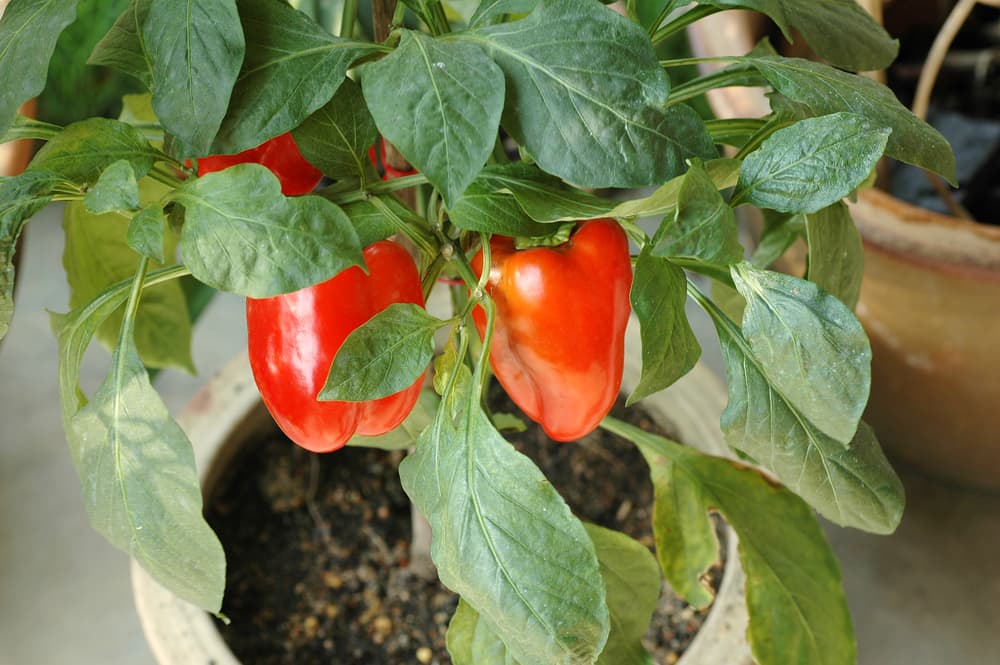
“After watering, I now have two ways of getting the germination temperatures I need.
Firstly, I place them in a heated propagator with a propagator lid with access to light, leaving until ready to transplant seedlings into pots, or alternatively, I place them in a clear plastic bag or propagator and put them in the airing cupboard above the water heater until seedlings emerge.
“I then place them in a warm light space, but not on a windowsill unless in a heated propagator, as night-time temperatures can be very cold, I transplant them into pots when ready.”
Transplanting (Indoors)
For best results, growing indoors is probably my favourite.
This gives your peppers a better chance to stay warm, especially if you grow them somewhere like a greenhouse that’s designed to capture the sunlight.
You’ll want a fairly large pot, ideally 30cm or more in diameter, to give your pepper plant space to grow.
Even though the tiny seedling will look lost in a pot all by itself, you’ll be surprised how quickly they grow!
Aim to move your young pepper plant at the end of April if your greenhouse is heated, or at the beginning of May if not.
Transplanting (Outdoors)
When growing outdoors you can put your peppers in a pot, a grow bag, or straight into the ground.
Plant out after the middle of May, long after the last frost has passed.
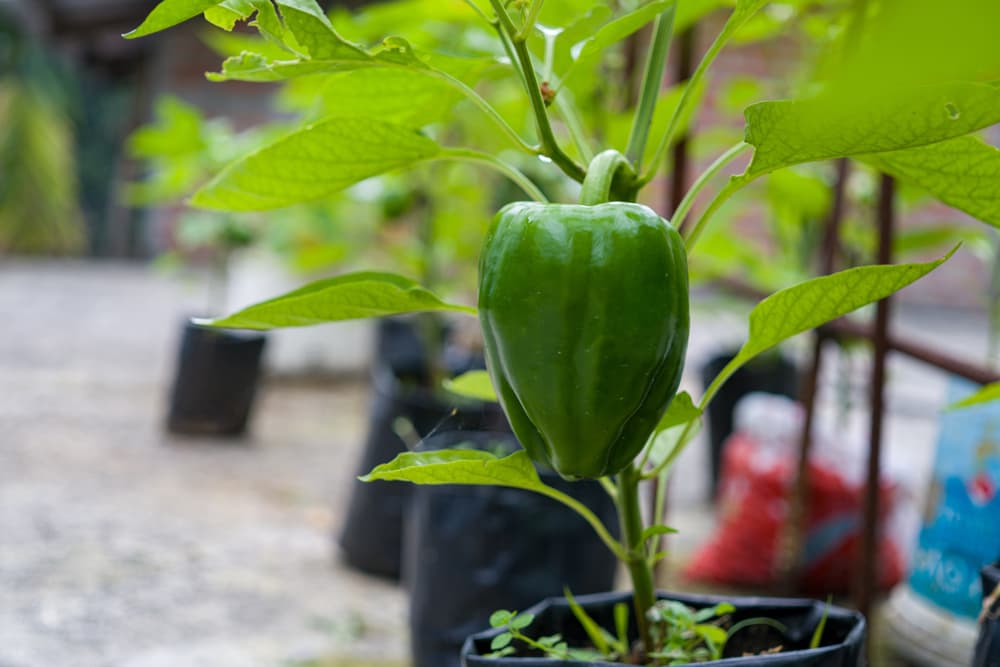
Young peppers are fragile and won’t do well at all with frosty conditions, so take extra care to heed this step.
“Plant out or plant on into a bigger pot using the same compost mix and consider feeding with a seaweed growth stimulant or tomato feed with seaweed extract after a few days of settling in,” shares Dan.
Capsicum Plant Care
If you haven’t grown peppers before you’ll be pleasantly surprised to learn they are fairly easy to care for (especially when growing indoors).
One thing you must absolutely get right is their watering schedule, as too little water can cause the fruits of your plant to spoil and rot.

This is something which I have direct experience with, owing to my inconsistent and often erratic watering schedule!
Watering
Peppers are very thirsty plants, so make sure to water them regularly.
Stay especially vigilant during hot weather to make sure the soil doesn’t dry out, as this will hinder their ability to grow.
In late spring and summer, I water mine at least once a day – sometimes more.
I also use a mulch to help prevent moisture from evaporating from the soil.
Fertilising
After the first fruits appear, give your pepper plants a healthy dose of liquid fertiliser.
Tomato or comfrey feed is a good shout, or something with a similar nutritional profile.
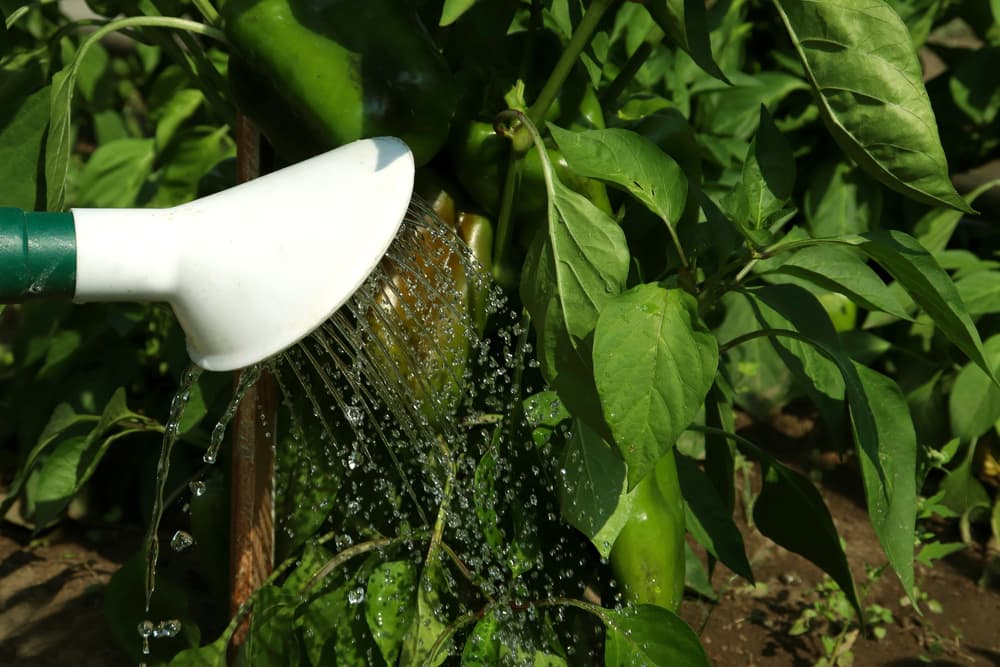
This will help your peppers to grow big and strong.
During fruiting season I’d recommend feeding your plant every fortnight or so.
Pinching Back
Left unchecked, pepper plants can become quite unruly.
You can pinch back stems to curate growth, with pinched tips good for encouraging branching, and pinching back side shoots good for promoting more peppers to grow.
Note that while pinching back side shoots will lead to more fruit, each one will be smaller.
Harvesting
When your peppers look ready to pick, you can pick them.
Wait until they’re the size you want, and leave them until they’re at your preferred stage of ripeness.
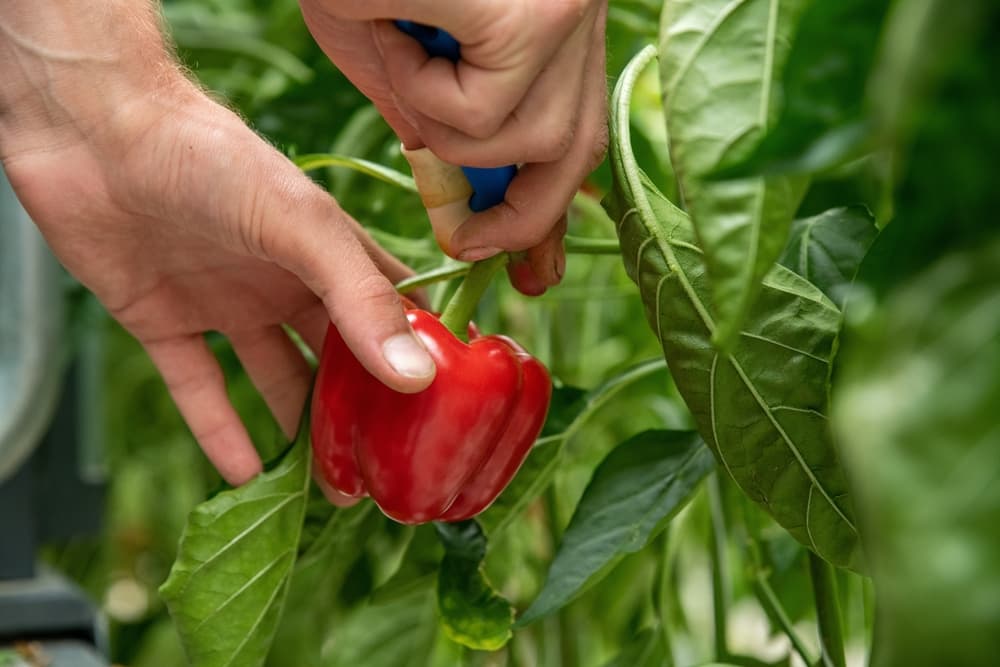
Remember: green peppers will ripen into red, through yellow and orange.
If you leave a pepper on the vine to ripen, another pepper won’t be able to take its place.
Harvesting green peppers brings the chance for an extra set of fruit that season, so plan your picking accordingly.
Troubleshooting
As with anything in your garden, peppers are prone to attract certain pests.
Here’s what to look for and, more importantly, how to eradicate them:
Aphids
These miniature green visitors love to eat the sap inside leaves, then leave their excrement behind which attracts fungus.
You’ll be able to see aphids with the naked eye, and if you notice a visitation, the first step is to remove them by hand.
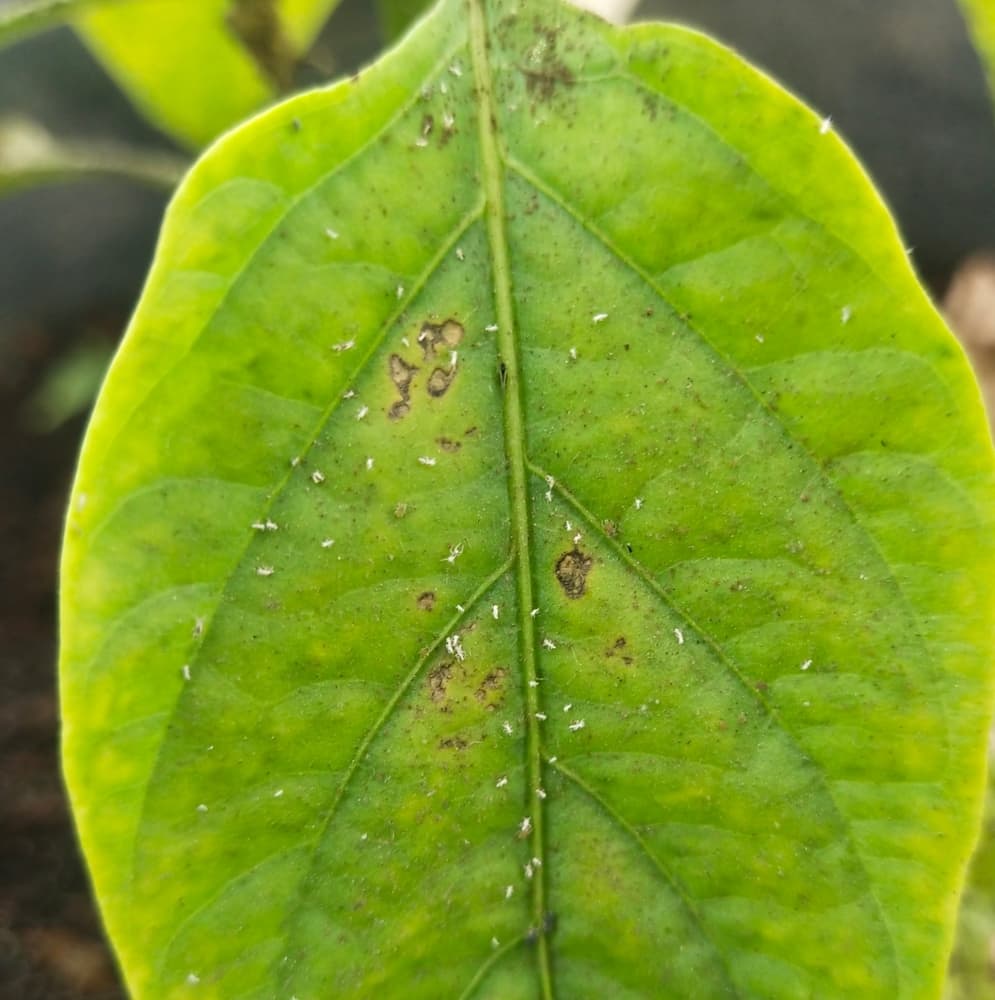
Personally I have had multiple aphid infestations on my pepper plants and have usually managed to curtail them by washing the leaves and removing by hand.
Ideally you wouldn’t want to use a pesticide on your peppers as it’s best to grow them organically, but this is a last-ditch option to consider if all else has failed.
Glasshouse Red Spider
These fellows sometimes weave thin webs to cover a section of a plant, before feasting on everything inside.
This type of bug is attracted by hot, dry growing conditions, so ensuring air remains moist is a good way of keeping them at bay.
Spritz your pepper plants occasionally to deter them.
If identified, the remedy is the same as aphids.
You’ll be amazed at how many peppers your humble little seedling will put forth by the end of its first season, and you’ll be amazed at how good they taste.
References
- 1Capsicum annuum (bell pepper). (2019). CABI Compendium. https://doi.org/10.1079/cabicompendium.15784
- 2The Travelling Botanist: Belated Plant Fascination Day Special: Peppers! (2019, May 21). Herbology Manchester. Retrieved March 14, 2023, from https://herbologymanchester.wordpress.com/2019/05/21/the-travelling-botanist-belated-plant-fascination-day-special-peppers/
